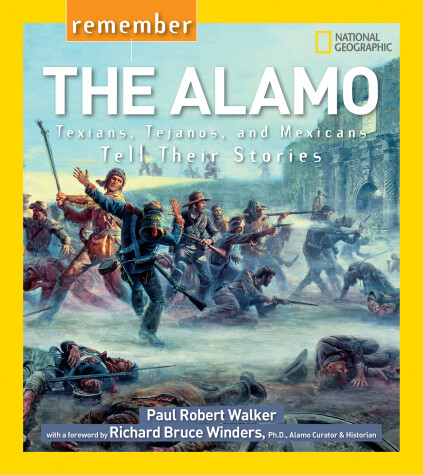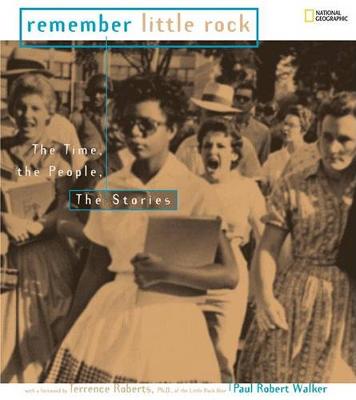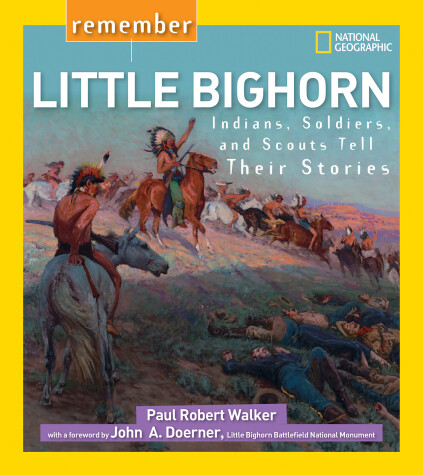Remember
3 total works
Remember the Alamo presents a fresh look at one of the most famous battles in American history. The story has been told countless times in everything from comic books to feature films. Always it is the brave Americans—Jim Bowie, Davy Crockett, William Travis, and others—fighting the overwhelming forces of a cruel dictator for the right to live in a Texas independent of Mexican rule. Too often, little mention is made of the Tejanos—Mexican Texans—who put their lives on the line to fight alongside the other defenders at the Alamo. And what about Santa Anna? Was he so wrong in trying to keep Americans from taking over his country? Clearly there is more to the story.
Paul Robert Walker has studied the evidence—messages sent out from the Alamo before the battle, reports written by Tejano and Texian leaders, eyewitness accounts from a slave and the handful of women and children who were spared by Santa Anna, and stories told by Mexican officers and soldiers. He has consulted with experts, examined the historic sites, and read the most recent scholarly theories to present the story of the Alamo through the eyes of Texians, Tejanos, and Mexicans as you've never heard it before.
National Geographic supports K-12 educators with ELA Common Core Resources.
Visit www.natgeoed.org/commoncore for more information.
Paul Robert Walker has studied the evidence—messages sent out from the Alamo before the battle, reports written by Tejano and Texian leaders, eyewitness accounts from a slave and the handful of women and children who were spared by Santa Anna, and stories told by Mexican officers and soldiers. He has consulted with experts, examined the historic sites, and read the most recent scholarly theories to present the story of the Alamo through the eyes of Texians, Tejanos, and Mexicans as you've never heard it before.
National Geographic supports K-12 educators with ELA Common Core Resources.
Visit www.natgeoed.org/commoncore for more information.
Using eyewitness accounts from a variety of key participants, including the nine black students who integrated Central High School, white students, black students, teachers, parents on both sides, military, police, government officials, including his own personal interviews with many of these people at the 50th anniversary celebration in September 2007, Paul Walker explores what happened, what's changed, what hasn't, and why. A history of school desegregation will be an integral part of the overall civil rights time line in the back of this book, along with selected postscripts. The foreword will be by Terrence J. Roberts, Ph.D., one of the Little Rock Nine.
Remember Little Bighorn, maintains the momentum of this award-winning National Geographic series, which continues to set new standards in nonfiction history books for middle-grade students.
Author Paul Robert Walker draws on scores of eyewitness accounts of the Battle of the Little Bighorn from Indians, soldiers, and scouts, measuring their testimony against the archaeological evidence to separate fact from fiction. From this wide kaleidoscope of testimony, the author focuses his narrative into an objective and balanced account of one of the most contentious chapters of American history.
Covering the core curriculum topics of Westward Expansion and the Indian Wars, Walker's text is a vivid and timely historical narrative to mark the 130th anniversary of the Battle of the Little Bighorn in June 2006.
Readers first learn about events preceding the fighting, including the discovery of gold on Indian land in the Black Hills, the refusal by Sitting Bull, Crazy Horse, and other Indian leaders to obey a government order to live on the Great Sioux Reservation, and the subsequent battle in Rosebud Valley. The narrative evolves to the three major clashes known collectively as the Battle of the Little Bighorn: the attack by Major Reno on Sitting Bull's village, the "Custer Massacre" in which Crazy Horse and more than a thousand warriors wipe out George Armstrong Custer and his immediate command, and the final battle on Reno Hill, which culminates in the victorious Sioux and Cheyenne setting fire to the grass and moving up the river.
The afterword explains how the greatest Indian victory only hastened their final defeat, as news of Custer's fate enflamed public opinion and led Congress to give control of all Sioux agencies to the Army. Readers learn how Sioux rations were cut off until native claims to the Black Hills and Montana hunting grounds were renounced.
In the finest National Geographic tradition, the book illuminates this controversial period in American history with extensive use of primary sources. Some 50 archival images are included, several by Native Americans, plus a map showing troop and Indian movement. Remember Little Bighorn also features a comprehensive time line of Indian Wars, web sites, student-friendly resources, and a quick-reference index that make it an ideal source for writing reports.
National Geographic supports K-12 educators with ELA Common Core Resources.
Visit www.natgeoed.org/commoncore for more information.
Author Paul Robert Walker draws on scores of eyewitness accounts of the Battle of the Little Bighorn from Indians, soldiers, and scouts, measuring their testimony against the archaeological evidence to separate fact from fiction. From this wide kaleidoscope of testimony, the author focuses his narrative into an objective and balanced account of one of the most contentious chapters of American history.
Covering the core curriculum topics of Westward Expansion and the Indian Wars, Walker's text is a vivid and timely historical narrative to mark the 130th anniversary of the Battle of the Little Bighorn in June 2006.
Readers first learn about events preceding the fighting, including the discovery of gold on Indian land in the Black Hills, the refusal by Sitting Bull, Crazy Horse, and other Indian leaders to obey a government order to live on the Great Sioux Reservation, and the subsequent battle in Rosebud Valley. The narrative evolves to the three major clashes known collectively as the Battle of the Little Bighorn: the attack by Major Reno on Sitting Bull's village, the "Custer Massacre" in which Crazy Horse and more than a thousand warriors wipe out George Armstrong Custer and his immediate command, and the final battle on Reno Hill, which culminates in the victorious Sioux and Cheyenne setting fire to the grass and moving up the river.
The afterword explains how the greatest Indian victory only hastened their final defeat, as news of Custer's fate enflamed public opinion and led Congress to give control of all Sioux agencies to the Army. Readers learn how Sioux rations were cut off until native claims to the Black Hills and Montana hunting grounds were renounced.
In the finest National Geographic tradition, the book illuminates this controversial period in American history with extensive use of primary sources. Some 50 archival images are included, several by Native Americans, plus a map showing troop and Indian movement. Remember Little Bighorn also features a comprehensive time line of Indian Wars, web sites, student-friendly resources, and a quick-reference index that make it an ideal source for writing reports.
National Geographic supports K-12 educators with ELA Common Core Resources.
Visit www.natgeoed.org/commoncore for more information.


